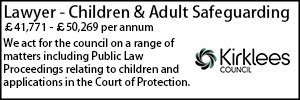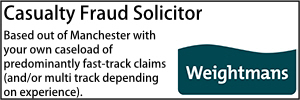Risk assessment – a safeguard to fairness
William Green examines the risk assessment criteria set out by the Court of Appeal for child welfare cases and how local authorities can address them.
- Details
In the realm of family law, the thoroughness of risk assessments can significantly impact the outcomes of child welfare cases. This article delves into the critical role of Re F factors, the challenges faced by local authorities in addressing them, and the implications for ensuring that all care options are meticulously considered before reaching a final decision.
Judges have a multitude of factors to consider before determining what is in a child’s best interests. As practitioners, we have observed judgments becoming increasingly lengthy as courts strive to ensure all relevant factors, both statutory and case law-based, are considered.
The concept of risk is inescapable to decision-making processes, and professionals such as social workers, lawyers, and judges must always keep risk in mind.
The Court of Appeal has addressed risk and the court’s approach to risk assessment in several cases, clearly outlining the necessary approach.
Re F (A Child) (Placement Order: Proportionality) [2018] EWCA Civ 2761
In 2018, the Court of Appeal, in the case of Re F (A Child) (Placement Order: Proportionality), delivered a judgment by Lord Justice Peter Jackson. The brief facts are as follows: The mother, aged 33, had a challenging early childhood. She worked successfully as a beauty therapist on cruise ships for 12 years. However, in 2015, she faced serious difficulties due to a violent relationship, leading her to seek refuge. This triggered a pattern of binge drinking in response to anxiety. She then entered a relationship with the father, whom she met during counselling. Their relationship was marked by violence and the father’s drug use, including violence towards the grandmother.
The local authority first became involved following an incident in October 2016 and worked with the parents during the mother’s pregnancy. The parents separated after a violent incident in September 2017, shortly after Robbie’s birth. Two further serious incidents occurred in Robbie’s presence in December 2017, and the father was briefly sectioned after attempting suicide.
Concerned about the mother’s drinking and level of cooperation, the local authority initiated care proceedings in December 2017 and applied for Robbie’s removal to foster care. This application was refused by HHJ Wilding, and an interim supervision order was made instead. A written agreement between the mother and the local authority stipulated that the grandmother would move in, the mother would not drink, and Robbie would have no contact with his father. The mother continued to care for Robbie until 29 June 2018, by which time he was 11 months old.
Various assessments were conducted, including a parenting assessment, a psychiatric assessment, hair strand testing, a risk assessment of the father, and a Special Guardianship assessment.
The local authority’s final evidence sought for the child to remain in the mother’s care under a Supervision order. At the Issue Resolution Hearing, the Children’s Guardian requested an adjournment of the final hearing to allow for further alcohol testing of the mother and to seek CCTV evidence from a pub, relating to an incident where the parents were seen together with their child in a pub.
Testing of the mother showed excessive alcohol levels from December 2017 to June 2018. CCTV ultimately showed that the mother had consumed up to a litre of wine. Phone records also demonstrated that the mother and father had been in contact. In other words, it was proven that the mother had been lying to professionals.
The local authority changed its care plan and sought a care and placement order. This was supported by the Children’s Guardian. Ultimately, the trial judge made the orders as sought.
Lord Justice Peter Jackson stated: “In short summary, there is no complaint about the judge’s legal self-direction, his findings of fact, or his conclusion that the threshold for intervention was met. Further, he identified:
- The type of harm that might arise.
- The likelihood of it arising. But he did not sufficiently address:
- The consequences: what would be the likely severity of the harm to Robbie if it did come to pass?
- Risk reduction/mitigation: would the chances of harm happening be reduced or mitigated by the support services that are or could be made available?
- The comparative evaluation: in light of the above, how do the welfare advantages and disadvantages of Robbie growing up with his mother compare with those of adoption?
- Proportionality: ultimately, is adoption necessary and proportionate in this case?”
“Lacking these components, the judge’s analysis did not, in my view, provide an adequate foundation for adoption in a case where the need for such a profound order is not immediately obvious. With the passage of time, a rehearing is unfortunately inevitable, and in view of the child’s age, we have given directions to expedite this.”
Re T (Children: Risk Assessment) EWCA Civ 93
Since the Re F case, several subsequent cases have addressed the Re F risk assessment criteria. The most recent, from 2025 is Re T (Children: Risk Assessment) EWCA Civ 93. In this case, the Court of Appeal allowed the appeal, finding that the judge had not properly applied the Re F analysis. The court highlighted several issues, including the failure to identify the degree and type of risk, the use of a linear assessment instead of comparing care options, and the neglect of welfare checklists.
Again, Lord justice Peter Jackson giving judgment stated as follows:-
“Accordingly, the court had to address these questions in relation to each of these children:
(1) What type of harm has arisen and might arise?
(2) How likely is it to arise?
(3) What would be the consequences for the child if it did?
(4) To what extent might the risks be reduced or managed?
(5) What other welfare considerations have to be taken into account?
(6) In consequence, which of the realistic plans best promotes the child’s welfare?
(7) If the preferred plan involves interference with the Article 8 rights of the child or of others, is that necessary and proportionate?” and;
“A structured analysis of this kind, adapted to the facts of the individual case, is of benefit to those who make decisions and to those who are affected by them. The analysis need not be lengthy, but it ensures that undue weight is not given to one factor, however notable, and that other important factors are not overlooked. It must be remembered that risk assessment is about the realistic assessment of risk, not about the elimination of all risks. Likewise, the assessment of actual or likely harm is not the same thing as an all-round welfare assessment. Unfortunately, as the parents have argued, several necessary questions were neither asked nor answered in the present case. The all-important concluding section of the judgment falls well short of justifying such far-reaching decisions. There was no effective risk assessment, and consequently no proper welfare evaluation, comparison of the options, or consideration of proportionality”.
Conclusion
The Re F factors are often not fully addressed in local authority final statements. Consequently, these points are sometimes raised for the first time during cross-examination at the final hearing, which is far from ideal. Social workers frequently rely on matters of ’emotional harm’ but fail to specify how this harm will be caused, its impact on the child, and the preventive measures that can be taken. These factors can often be linked with the concept of ‘care with support.’ It might be crucial that these points are addressed during cross-examination and in closing submissions to ensure the court has a comprehensive understanding of the measures that can be implemented. This ensures that all options are properly considered before reaching a final decision.
William Green is a barrister at Trinity Chambers, Chelmsford.
































